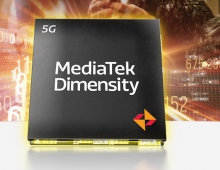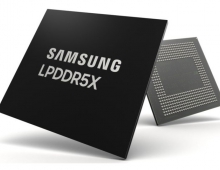F-Tech Solar MT
1. Introduction
 F-Tech was first to present a solar powered GPS receiver based on the SiRF StarIII chipset. The technology has developed further and now, F-Tech has introduced a new series of solar powered GPS receivers, smaller in dimensions and using a different chipset from MediaTek. The F-Tech Solar 2.5MR promises superb technology and autonomy. We compare it with a well known SiRF Star III receiver from Globalsat, the BT-338.
F-Tech was first to present a solar powered GPS receiver based on the SiRF StarIII chipset. The technology has developed further and now, F-Tech has introduced a new series of solar powered GPS receivers, smaller in dimensions and using a different chipset from MediaTek. The F-Tech Solar 2.5MR promises superb technology and autonomy. We compare it with a well known SiRF Star III receiver from Globalsat, the BT-338.
- F-Tech Solar 2.5MR
![]() Mini Solar Bluetooth GPS Receiver is a total solution for GPS receivers. High capacity rechargeable lithium-ion battery, GPS antenna, Blue tooth transmit/receive system are included. It is designed on the most advanced chipset solutions, using either the SiRF starIII or MediaTek, providing full-functionality, RoHS compliance, industry-level locating capacity and low prices.
Mini Solar Bluetooth GPS Receiver is a total solution for GPS receivers. High capacity rechargeable lithium-ion battery, GPS antenna, Blue tooth transmit/receive system are included. It is designed on the most advanced chipset solutions, using either the SiRF starIII or MediaTek, providing full-functionality, RoHS compliance, industry-level locating capacity and low prices.
 You can use the Mini Solar Bluetooth GPS Receiver as a vehicle navigator, security system, geographic measurement tool, and for agriculture purposes. The Mini Solar Bluetooth GPS Receiver operation requirement is a proper power supply and the open sky-view. This Bluetooth GPS Receiver can communicate with other electronic devices through the Blue-tooth interface. Built-In Flash Memory can save satellite information and do almanac refresh periodically. This will shorten Time To First Fix (TTFF) effectively.
You can use the Mini Solar Bluetooth GPS Receiver as a vehicle navigator, security system, geographic measurement tool, and for agriculture purposes. The Mini Solar Bluetooth GPS Receiver operation requirement is a proper power supply and the open sky-view. This Bluetooth GPS Receiver can communicate with other electronic devices through the Blue-tooth interface. Built-In Flash Memory can save satellite information and do almanac refresh periodically. This will shorten Time To First Fix (TTFF) effectively.
 The battery life is much longer than that offered by competitor devices. The Lithium-ion battery can be re-charged under natural or artificial light, regardless of whether the BT2.5 receiver is turned on or off. Most of the time, you will not require a charger! The Mini Solar Bluetooth GPS Receiver is designed for high position accuracy. It will update the satellite position every second. The Mini Solar Bluetooth GPS Receiver auto-locating feature, is capable of automatically determining a navigation solution without intervention.
The battery life is much longer than that offered by competitor devices. The Lithium-ion battery can be re-charged under natural or artificial light, regardless of whether the BT2.5 receiver is turned on or off. Most of the time, you will not require a charger! The Mini Solar Bluetooth GPS Receiver is designed for high position accuracy. It will update the satellite position every second. The Mini Solar Bluetooth GPS Receiver auto-locating feature, is capable of automatically determining a navigation solution without intervention.
- Features and Functions
- Total solution in power management. Unique Solar Cell re-charging design (patent protected)
- Green solution in wireless GPS receiver application. Always charge your lithium-ion battery under natural or artificial light. Spare your charger, Spare your space
- Considerate LED/switch button design. Easy look, easy touch !one-touch button design keeps your hands free
- Act as WARM/HOT start with built-in battery. Effectively shortens TTFF.
- Automatic almanac/ephemeris update in flash memory. Programmable flash utility to do refresh on satellite orbit data information every 10 minutes
- Smart power management solution. GPS Device will automatically shutdown in cases where Bluetooth is not detected after a default period of time
- Compatible with Bluetooth Serial Port Profile (SPP)
- Easy application for vehicle, trip navigation, vehicle management, AVL, personal navigation, tracking system and map applications.
- Used chipset
The new solution from F-Tech uses the MediaTek MT3 GPS chipset. Below we can see a comparison between the MT3 and SiRF Star III chipsets:
| Core GPS processor | MediaTek MT3 |
SiRF Star III |
| General | ||
| Working Frequency | L1, 1575.42MHz |
|
| C/A code | 1.023 MHz chip rate |
|
| Satellite Tracking Count | 32 (NEW) |
20 |
| Sensitivity | -158dBm |
-159dBm |
| Antenna Type | Active |
Passive |
| Acquiring Position Speed | ||
| Cold Start | <37 Sec, average |
<41 Sec, average |
| Warm Start | <36 Sec, average |
<37 Sec, average |
| Hot Start | <1 Sec, average |
<1 Sec, average |
| Reacquisition Time | <1 Sec |
0.1 Sec (Typical) |
| Refresh Rate | Up to 5 Hz |
1 Hz |
| Acquiring Position Accuracy | ||
| Position | 3m CEP(50%), without SA (horizontal) |
10 meters, 2D RMS |
| WAAS/EGNOS | <2.5m |
7 meters, 2D RMS |
| Speed | 0.1 m/sec |
|
| Time | 100 ns RMS |
1 microsecond synchronized to GPS time |
| Acquiring Position Range | ||
| Altitude | <18,000m |
|
| Speed | <515m/sec |
|
| Acceleration | <4G |
|
| GPS Protocol | NMEA 0183(V3.01) GGA,GSV,RMC,VTG |
|
| Baud Rate | 9600,N,8,1 |
|
| Input Power | 5V DC |
|
| Power consumption | 45 mA average |
75 mA average |
30 mA with Solar panel |
60 mA with Solar panel |
|
| Working Environment | ||
| Working Temp. | -40°C ~ +85°C |
|
| Relative Humidity | 5% ~ 95% un-compressed |
|
Looking at the specs, we can see significant differences between the chipsets in terms of sensitivity, cold start time and refresh rate. Both receivers support WAAS/EGNOS, although the MT3 promises much better "position accuracy" (2.5 vs 7.0m) compared with the SiRFStarIII. Another interesting feature is the much lower power consumption, 45mA vs 75mA, and with the Solar panel, the MT3 chipset can stay online for twice as long as the SiRFStarIII.





















